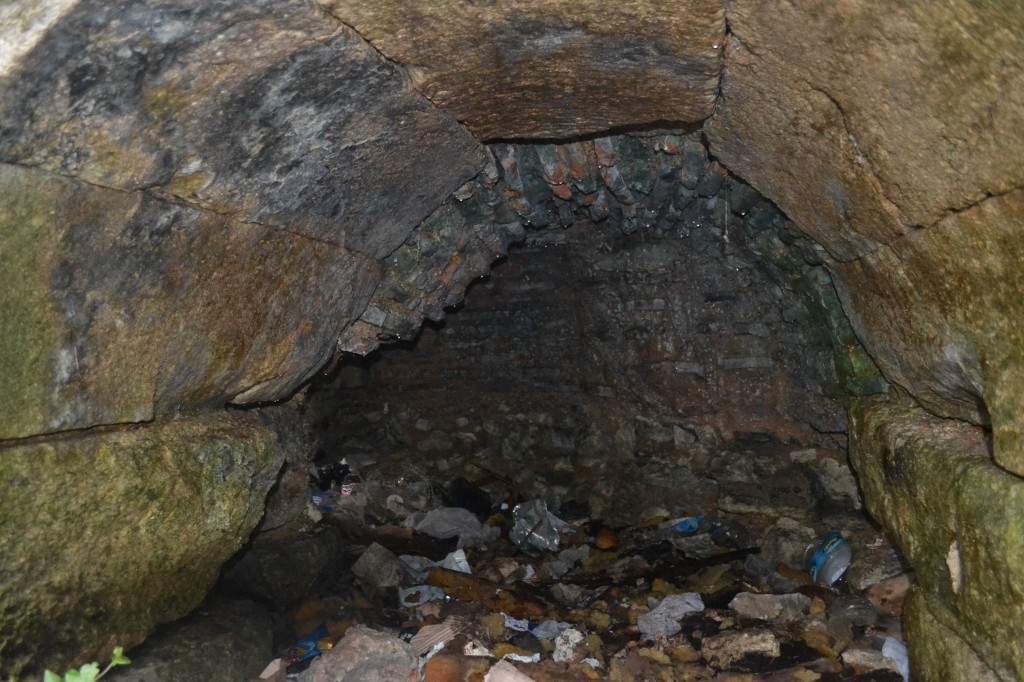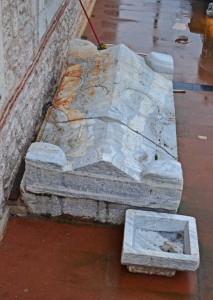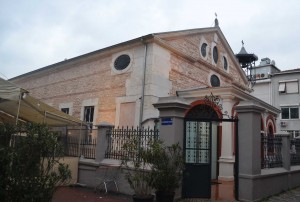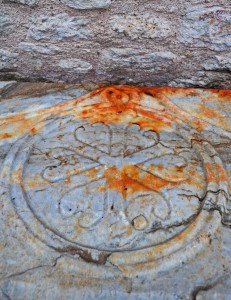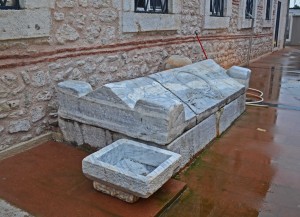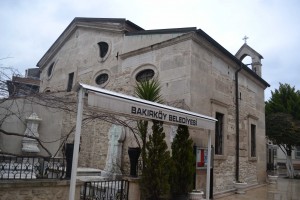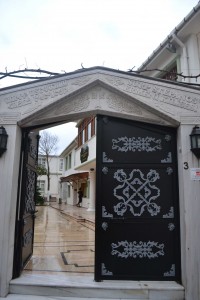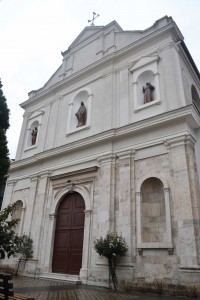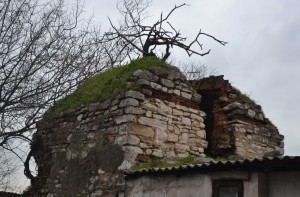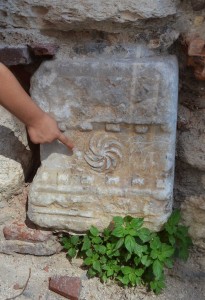Archive for February 17th, 2015
Yeşilköy is different from the rest of Istanbul. There is a port with three churches nestled around it, all named after St Stephen. Tuna and Şeker (1999) relate the story of a ship carrying relics of St Stephen being caught in a storm as it set sail from Constantinople. It put into a nearby port on the Marmara shore and the saint’s bones were taken to a church for safekeeping. Thereafter, the church went by the name of St Stephen.
The current Orthodox church of Agios Stefanos (40.957019, 28.821339) is reputed to be built on site of the Byzantine church in which the remains of St Stephen sheltered from the tempest. It is a well-kept stone building with an ornate late 5th or early 6th century Byzantine sarcophagus embedded in the ground on its eastern side. A persistent rumour links it to the hypogeum in Bakırköy. It is a beautiful piece of marble stonework, in temple form with crosses and laurels. An impost capital of the Ionic order sits on the ground beside the sarcophagus, looking a little like a bird bath.
Within 30 metres of Agios Stefanos are the Armenian church of Surp Stepanos (40.956967, 28.820757) and the immense Latin Catholic complex of Ayastefanos or St Etienne (40.957709, 28.821756). Both of these seem to be the centres of flourishing communities. The churches of Yeşilköy are not hidden behind defensive walls. Happily, they are confidently open to visitors.
The village of Ayastefanos has several other claims to fame. In 1203, the invading fleet of the Fourth Crusade landed here prior to launching their assault on Constantinople. Geoffrey de Villehardouin, a chronicler with the Latin forces, recorded the event thus:
All started from the port of Abydos together. Then might you have seen the Straits of St. George (as it were) in flower with ships and galleys sailing upwards, and the beauty thereof was a great marvel to behold. Thus they sailed up the Straits of St. George till they came, on St. John the Baptist’s Eve, in June (23rd June 1203) to St. Stephen, an abbey that lay three leagues from Constantinople. There had those on board the ships and galleys and transports full sight of Constantinople; and they took port and anchored their vessels.
De Villehardouin, G (c1213) Memoirs or Chronicle of the Fourth Crusade and the Conquest of Constantinople. http://www.gutenberg.org/dirs/etext04/mctfc10h.htm
A short distance to the east of the churches is a piece of ecclesiastical Byzantine marble embedded in an Ottoman wall. This might conceivably have come from the Byzantine abbey referred to by de Villehardouin.
Ayastefanos also appears to be the location of the earliest surviving Turkish film, a documentary recording the destruction of the Russian memorial to the fallen in the 1877-78 war between Russia and the remnants of the Ottoman Empire. The Turkish army demolished the provocatively situated monument in 1914. Ayastefanos was renamed Yeşilköy in 1926 as part of the Republican fervour for eradicating non-Turkish names.

Posted February 17, 2015 Posted by Adam in Uncategorized
